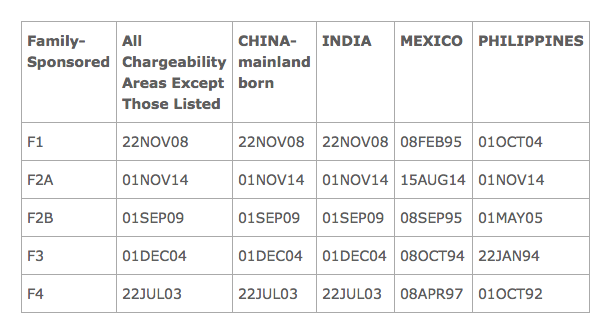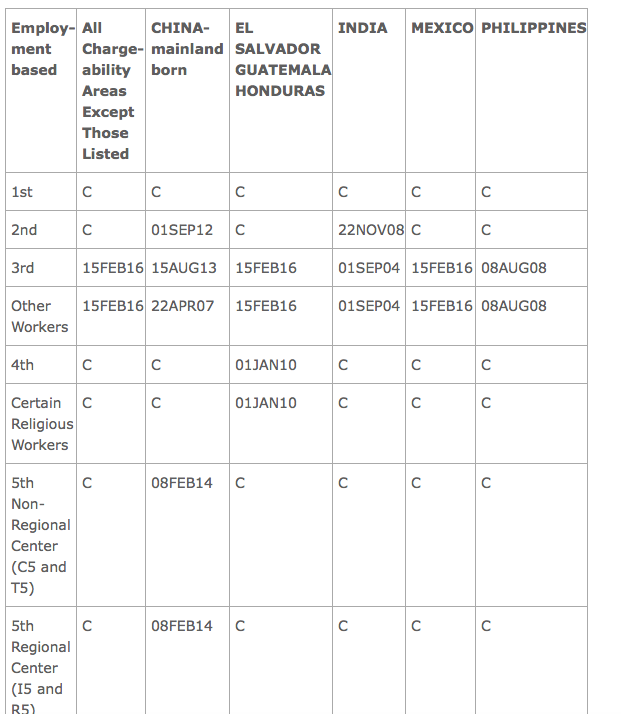The USCIS Stabilization Act, passed on October 1, 2020 established the current premium processing fees and the authority for the Department of Homeland Security to adjust the premium fees on a biennial basis. While USCIS has not used this authority to change the new Premium Processing fees after they were introduced after that date, USCIS has decided that now is the time to increase those fee. They are increasing the premium processing fees USCIS charges for all eligible forms and categories to reflect the amount of inflation from June 2021 through June 2023 according to the Consumer Price Index for All Urban Consumers.
Before going into the actual fee increase, it is important to note that these increase will go into effect as of February 26, 2024. This means any application postmarked February 26, 2024 or later MUST include the new fees.
So what are the new fees? Below is a table put out by USCIS which shows what the new fees will be for each premium request type:
| Form | Previous Fee | New Fee |
| I-129 Petition for a Nonimmigrant Worker | 1. For H-2b or R-1: $1500 2. For All other I-129s: $2500 | 1. For H-2b or R-1: $1685 2. For All other I-129s: $2805 |
| I-140 Immigrant Petition for Alien Worker | $2500 (Currently allowed for classifications E11, E12, E21 (non-NIW), E31, E32, EW3, E13 and E21 (NIW)) | $2805 |
| I-539 Application to Extend/Change Nonimmigrant Status | $1750 (ONLY allowed for Change/Extension of F-1, F-2, M-1, M-2, J-1, J-2, E-1, E-2, E-3, L-2, H-4, O-3, P-4, and R-2) | $1965 |
| I-765 Application for Employment Authorization | $1500 (Currently only available for certain F-1 students with categories C03A, C03B, C03C | $1685 |
If this increase allows USCIS is able to handle its caseload and timelines for non-premium cases come down, without raising fees on all case types, then I think it is a good compromise – instead of raising all USCIS fees, it just raises a fee for a service that is not needed by most people. However, I fear that USCIS will still move forward with additional increases in the near future, putting the immigration process out of reach for more people.
The best way to avoid the increased fees is to file application well in advance of when needed. Of course USCIS limits this somewhat by only allowing you to file an application 6 months prior to the start date, but giving yourself enough time to file the application that far in advance can avoid the need for premium in at least some cases. Of course, because USCIS is taking so long to adjudicate most case types right now, it may not help. In these cases, the only choice may be to use premium. However, if you wish to discuss possible alternatives that may help you in your case, please do not hesitate to reach out to me.
Please remember, as always, this blog does not offer legal advice. If you need legal advice, consult with a lawyer instead of a blog. Thank you.



 The Department of State released the visa bulletin for October 2016 recently. Below is a summary of movement and changes.
The Department of State released the visa bulletin for October 2016 recently. Below is a summary of movement and changes. The August 2016 visa bulletin was released by the Department of State yesterday. It features backlogs for ALL countries in the EB-2 category and other changed. However, readers should understand, that while certain countries (India and China) have regular backlogs in the EB-2 category, those for other countries in the EB-2 category and those in the EB-1 category are temporary. I will discuss this more in depth below as we look at the specifics of the Visa Bulletin:
The August 2016 visa bulletin was released by the Department of State yesterday. It features backlogs for ALL countries in the EB-2 category and other changed. However, readers should understand, that while certain countries (India and China) have regular backlogs in the EB-2 category, those for other countries in the EB-2 category and those in the EB-1 category are temporary. I will discuss this more in depth below as we look at the specifics of the Visa Bulletin: We get this, and similar questions, from our clients frequently. This is a very complex issue and every situation is different. However, there are some key considerations you should think about. The key questions are:
We get this, and similar questions, from our clients frequently. This is a very complex issue and every situation is different. However, there are some key considerations you should think about. The key questions are:
